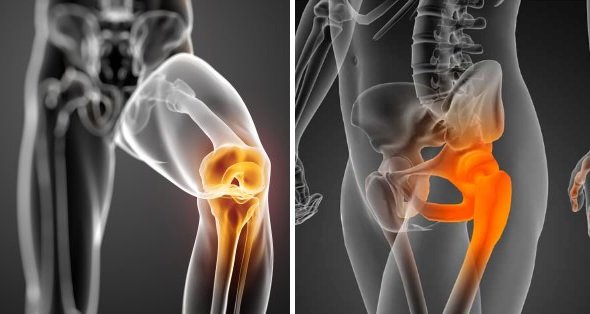Treatment Options in Hip and Knee Osteoarthritis

Treatment Options in Hip and Knee Osteoarthritis
There is consensus that patient self-care and health education are essential. The practice of aerobic physical activity (walking, cycling), exercises in the water, muscle enhancement and losing weight in the indicated cases have been shown to be beneficial in treating the problem.
Among the pharmacological treatment analgesics such as paracetamol are of first choice although nonsteroidal anti-inflammatory drugs (NSAIDs) are more effective for osteoarthritis of the hip and knee.
Drugs such as glucosamine sulfate are safe drugs but require prolonged treatment and are not helpful in episodes of acute pain.
Infiltrations with corticosteroids are effective although there is great variability in the duration of the effect and are not recommended in diabetic patients. Infiltrations with hyaluronic acid may have a greater effect on knee osteoarthritis than corticosteroids. Currently the infiltration of platelet-rich plasma (P.R.P.) is an option that presents better results than the previous ones for its powerful anti-inflammatory effect, which causes pain relief.
The next therapeutic step would be prosthetic surgery although regenerative stem cell therapy is beginning to yield favorable experimental results.
Prostheses are currently the most predictable treatment for severe knee and hip osteoarthritis. It should be borne in mind that the indication is not a function of complementary examinations but of the symptomatology. The current prosthesis have follow-ups long enough to offer excellent results with expert surgeons.
For any of the treatments previously discussed, the involvement of the patient from the beginning with measures such as weight control, physical activity and good muscles will favor the success of any of them.



